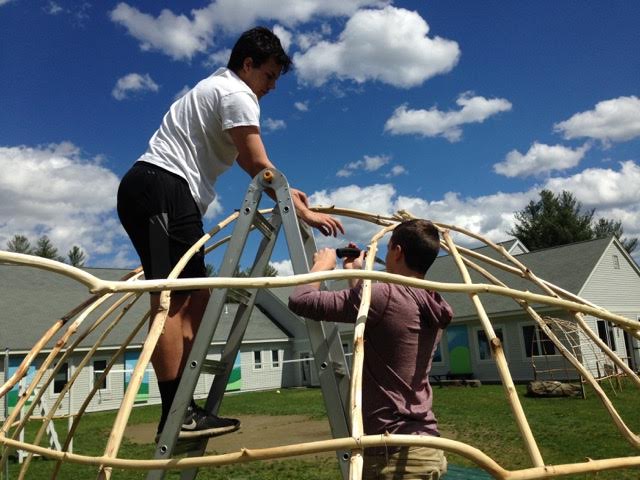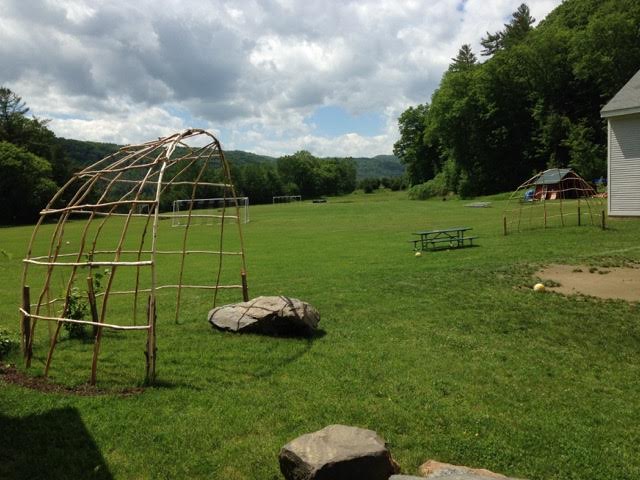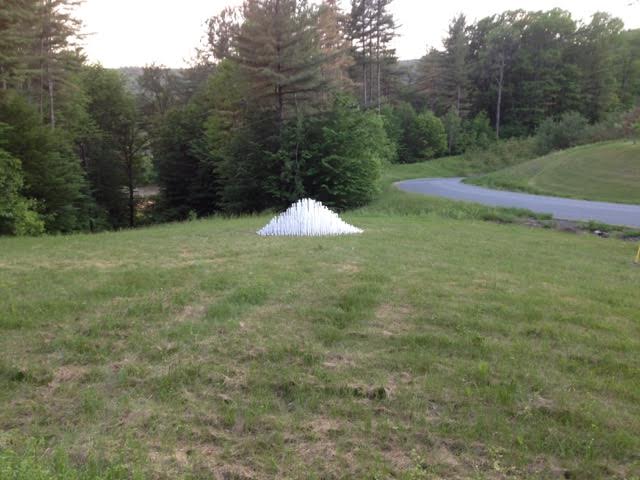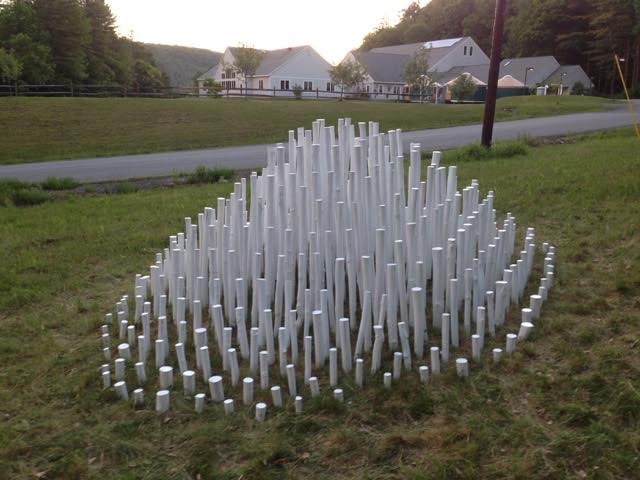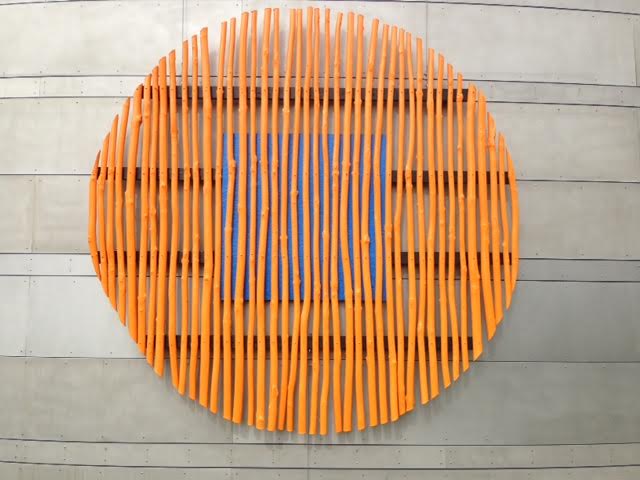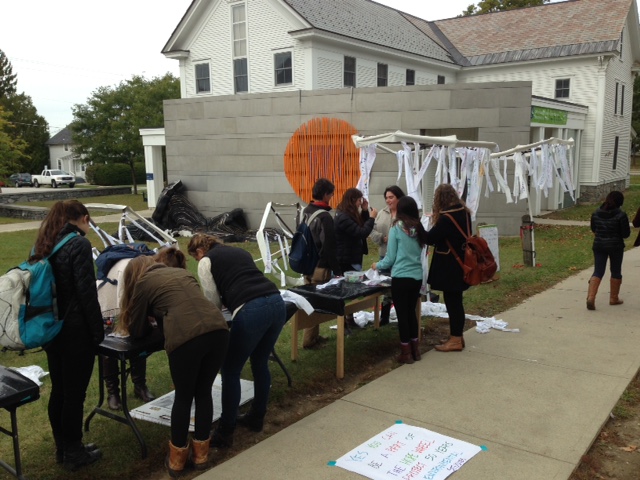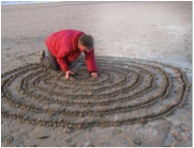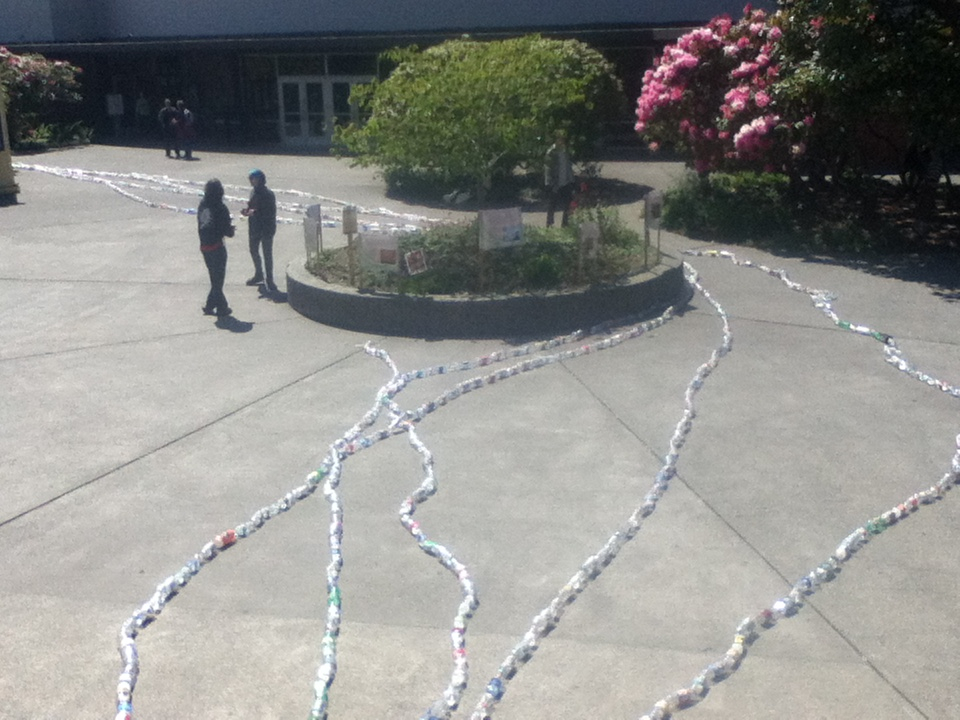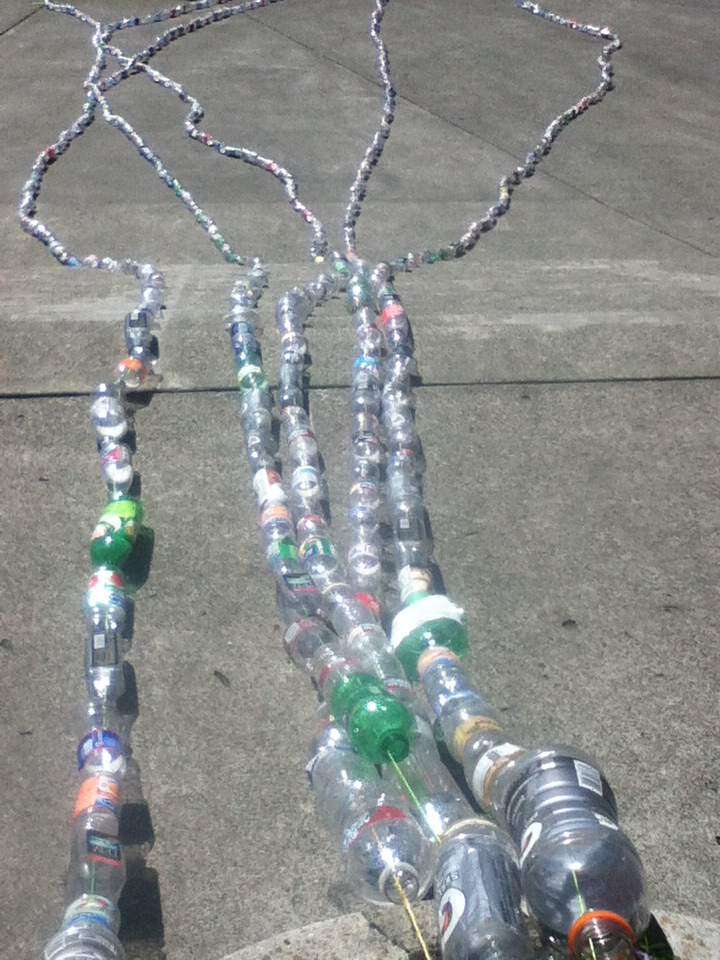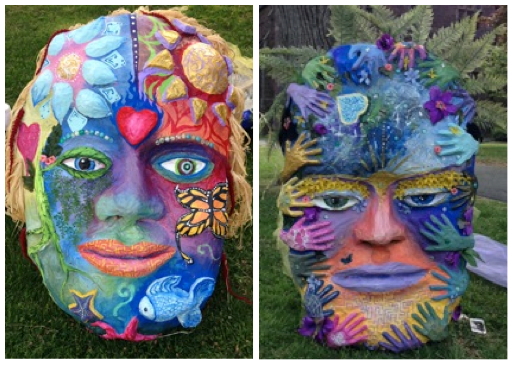
Spirit of Sustainability Masks: ‘Nature’ and ‘Community’
In an effort to expose students to sustainability through art, Mount Holyoke College invited artist Jay Mead to campus on April 9th and 10th to lead a workshop on the “Art of Sustainability,” deliver the Miller Worley Environmental Leadership Lecture and facilitate a community art installation entitled “The Spirits of Sustainability.”
Art of Sustainability Workshop
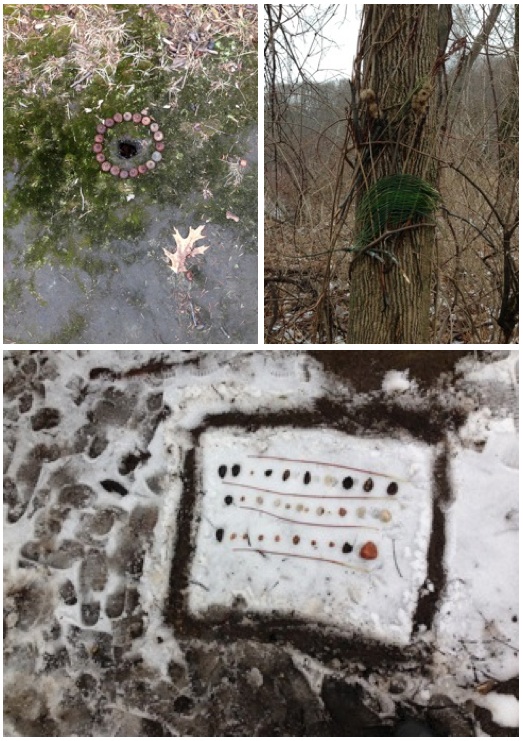
On April 9th, Jay led a workshop with Professor Serin Houston’s 15 “Sense of Place, Sense of Planet” Geography students. Using found natural materials such as mud, seeds, grasses, bark, wild scallions, leaves, sticks, rocks, acorns, trees, water, flowers and snow, students created art installations around a lake on campus. During the second half of class, students described their processes and pieces, and Jay offered his own observations into the creative dynamics underpinning the installations. Students’ stories travelled from the past to the present to the future and touched on a range of themes including identity, wonder, success and home. While this workshop was a wonderful exercise in the diversity of expression and interest, additionally, the students were given time to engage in serious play with natural materials. Jay emphasized that such creative exercises allow participants to experience deep right brain thinking. Such thinking can lead to insights into issues of personal and global sustainability.
Miller Worley Environmental Leadership Lecture
That evening Jay presented a public talk on “The Art of Sustainability” to about 50 people. He discussed what it is like to live in the “Cobb Hill” eco-village in rural Vermont and how sustainability inspires the art he creates. “The first thing is love,” Jay told the assembled faculty, staff and students at Mount Holyoke College. “You have to fight for something you love. You have to engage your heart.” He went on to say that “Sustainability needs to flow from the heart and be so integrated into the way humans live that we no longer have to use the word.” Clearly engaged with these ideas, students, faculty, staff and community members asked Jay a multitude of questions about how to translate such expressions of sustainability into urban contexts, how to keep creativity and art alive in the face of ecological crises and how to embody personal ideals to the fullest extent possible.
Spirit of Sustainability Masks
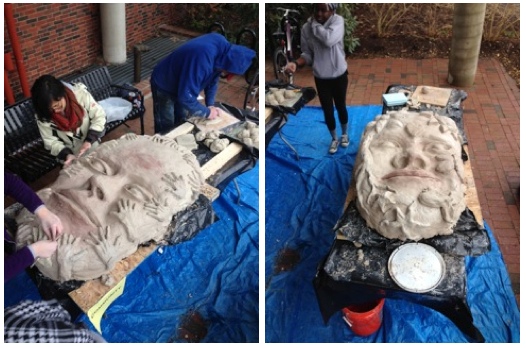
Creation of mask molds
On April 10th at the entrance to the Mount Holyoke Art Museum, Jay facilitated a day-long, community workshop open to all. Despite the cold weather, some 50 dedicated passersby participated. “Sustainability is a lot about community,” said Victoria Dawes an environmental studies major from Corning, New York. “When the entire community is coming together and thinking about environmental things, it’s an interesting way of getting onto the same page.”
Using hundreds of pounds of clay, car tires and recycled styro-foam, participants collectively shaped the clay into two larger-than-life head molds, “The Spirits of Sustainability.” One head was embraced by a series of hands to exemplify Community, while the second head featured a starfish, butterfly, flower and the sun to symbolize Nature. Then, they layered papier-mâché over the molds as a second step toward creating masks. Jay later returned to campus to release the masks from their clay molds.
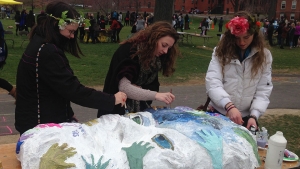
Painting the ‘Community’ Mask by Keely Savoie
On April 24th, as a part of Mount Holyoke’s Pangy Day (a celebration of spring, the college and the Earth), the masks were collaboratively painted by students. These two “Spirits of Sustainability” will be used for future college events and celebrations.
Jay’s visits were sponsored by the Miller Worley Center for the Environment, with additional support from the departments of geology and geography, environmental studies, architectural studies and art, as well as the Office of Student Programs and the Office of Religious and Spiritual Life.
More Reporting
From Mount Holyoke by Keely Savoie: “Re-imagining sustainability as art”
From Earth Day Network’s MobilizeU campaign, an international movement of concerned and active university students mobilizing their campuses
